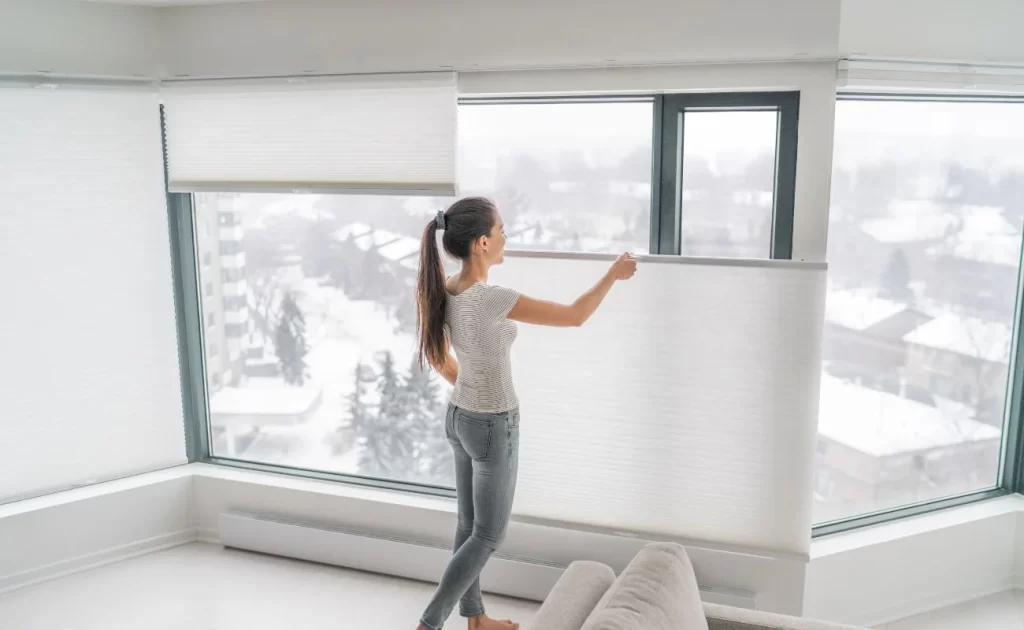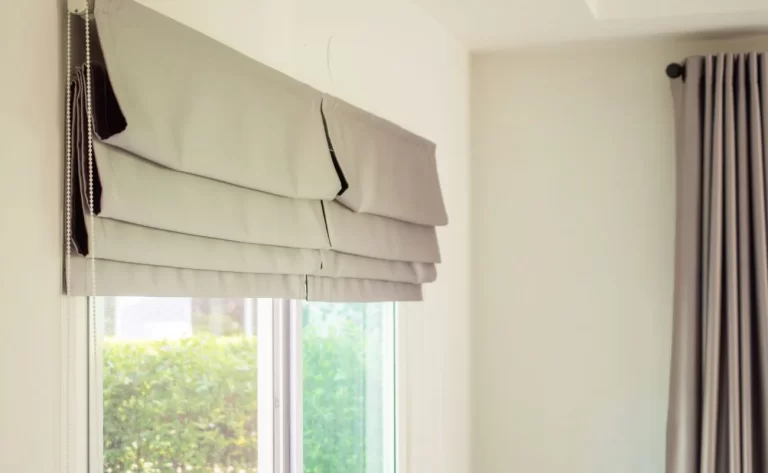Table of Contents

Welcome to Effortless Light Control
You’ve decided it’s time to upgrade your windows—and Automated Blinds vs. Automated Shades is the debate at the center of your decision. Both treatments put daylight on autopilot, save you energy, and integrate beautifully with smart‑home systems. But they aren’t interchangeable. By the end of this guide you’ll know exactly which option matches your style, lifestyle, and budget.
What Makes a Window Treatment “Automated”?
Motors, Sensors, and Smart‑Home Magic
Before diving into the blinds‑versus‑shades showdown, you need to understand what “automated” really means. Whether you choose blinds or shades, the core components are the same:
- Motorized drive that raises, lowers, or tilts the covering at the press of a button—or no button at all.
- Power source such as rechargeable lithium batteries, low‑voltage wiring, or a discreet plug‑in adapter.
- Control hub that connects to voice assistants, smartphone apps, schedules, and sunlight sensors.
- Optional extras like occupancy detection, geofencing, and climate‑aware automation so your windows react to the way you actually live.
When you hear “motorized,” think remote control. When you hear “automated,” think set it and forget it.
Automated Blinds vs. Automated Shades: Key Differences at a Glance
Feature | Automated Blinds | Automated Shades |
Light Control | Precise tilt lets you micro‑adjust glare and privacy without raising the blind. | One‑touch raise/lower blocks or invites light in broad strokes. |
Fabric & Slat Options | Rigid slats in wood, faux‑wood, aluminum, or vinyl. | Soft or structured fabrics—rollers, cellular, Roman, solar, and more. |
Energy Performance | Excellent for redirecting daylight; moderate insulation. | Top‑tier insulation with cellular or blackout fabrics; solar shades cut UV. |
Aesthetic Impact | Classic, architectural lines—great for traditional or minimalist rooms. | Seamless, designer look—ideal for modern and layered décor. |
Price Range | $$ (motor + slats) | $$–$$$ (motor + premium fabrics) |
Maintenance | Dust frequently; occasional deep clean. | Fabric‑safe vacuuming; spot cleaning. |
Best For | Home offices, bathrooms, and spaces where tilt control matters. | Bedrooms, media rooms, and large glass walls where full blackout or sheer is key. |
Light & Privacy: Do You Want Finesse or Full Coverage?
Blinds: Micro‑Manage the Sun
Automated blinds let you tilt slats as little as one degree. Working late and fighting screen glare? Just ask your voice assistant to pivot the slats halfway. You still enjoy daylight and a view, without the eye strain.
Shades: One‑Touch Serenity
Automated shades don’t tilt—they disappear. A single tap rolls fabric into a cassette, giving you an unobstructed panorama. Blackout liners block 99 % of incoming light, turning bedrooms into midnight at noon.
Pro Tip: Pair sheer shades with afternoon‑aware schedules so you soften harsh rays automatically while keeping that coveted golden‑hour glow.
Energy Efficiency: Slash Bills Without Lifting a Finger
- Heating and cooling account for roughly 50 % of the average utility bill. *
How Automated Blinds Help You Save
Blinds reflect direct sunlight toward the ceiling, spreading brightness deeper into the room. In winter, a quick “tilt up” routine captures solar warmth. In summer, “tilt down” bounces heat back outside, reducing A/C runtime.
Why Automated Shades Take It Further
Honeycomb cellular shades form insulating air pockets that cut heat transfer by up to 45 %. Program them to drop during peak midday heat and rise at sunset, and you’ll notice the thermostat working a lot less.
Safety & Accessibility: Hands‑Off Is Peace of Mind
Cords are a leading household hazard for small children and pets. Automated systems remove that risk entirely. You’ll also appreciate:
- Voice control for anyone with limited mobility or busy hands.
- Scheduled routines that simulate occupancy when you’re on vacation.
- Soft starts & stops that prevent sudden jerks, extending product life.
Smart‑Home Integration: Future‑Proof Your Investment
Both blinds and shades pair smoothly with platforms like Google Home, Alexa, Apple Home, and dedicated ecosystems such as Z‑Wave or Zigbee. The difference lies in what you trigger:
- “Movie time” dims the lights and lowers blackout shades in seconds.
- “Good morning” raises your blinds to 35° while the coffee maker brews.
Automated treatments talk to sensors, too. Imagine south‑facing shades that drop when indoor temps hit 75 °F, then lift once the HVAC catches up—completely hands‑free.
Style & Décor: Framed Views vs. Fabric Statements
Blinds Compliment Architecture
Wood and faux‑wood slats add warmth, crisp lines frame windows, and metal finishes pop in industrial lofts. Because slats stack, blinds eat up a bit more head rail space when fully open.
Shades Disappear Into Minimalism
Choose anything from woven natural fibers to sleek solar meshes. Roller cassettes hide neatly, so your scenic view takes center stage. Layer sheer curtains over motorized blackout shades for a luxe hotel vibe without the maintenance.
Installation & Upkeep: Know What You’re Signing Up For
Automated Blinds usually weigh less, making battery‑powered installs straightforward. Expect to recharge every six months to a year, depending on usage.
Automated Shades—especially wide cellular or blackout rollers—can be heavier. Hardwiring is often recommended for wall‑to‑wall windows, ensuring consistent power and eliminating battery swaps.
Maintenance is simple either way: dust blinds weekly; vacuum shade fabrics with a brush attachment monthly.
Cost Breakdown: Upfront vs. Lifetime Value
- Entry‑level automated blinds start in the mid‑three figures per window.
- Mid‑tier fabric shades run slightly higher due to material costs.
- High‑end custom shades with dual fabrics, solar sensors, and integrated hubs can reach premium pricing.
Remember, energy savings and potential insurance discounts for automated safety features offset long‑term costs.
Decision Matrix: Find Your Perfect Match
Answer these quick questions:
- Do you crave granular light control? → Choose automated blinds.
- Is blackout or sheer elegance non‑negotiable? → Choose automated shades.
- Are you planning whole‑home automation? → Both work—select based on décor.
- Is the window extra‑wide or hard to reach? → Shades are lighter on the eye; blinds may be lighter on the wallet.
Still torn? Mix and match. Many smart hubs let you run blinds in sun‑soaked areas and blackout shades in bedrooms—all from one app.
Your Next Step Toward Smarter Living
Now that you can clearly see the benefits of automated blinds vs. automated shades, it’s time to bring effortless light control into your home. Schedule a free in‑home consultation, test‑drive the motors yourself, and claim the comfort, energy savings, and wow‑factor you deserve.



